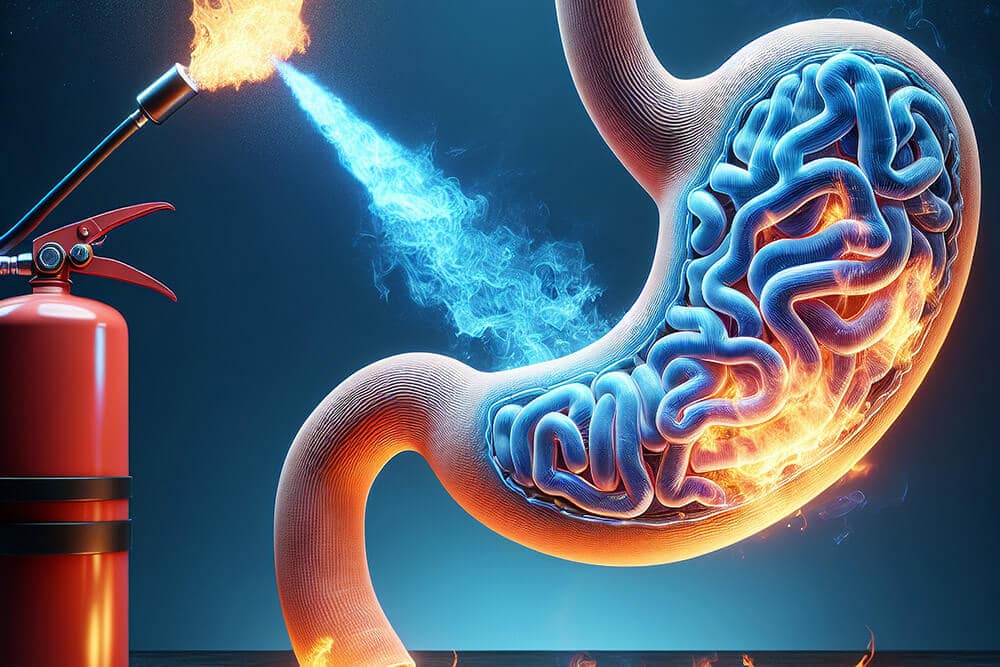What Is an Esophageal Ulcer?
An esophageal ulcer is an open sore in the lining of the esophagus the muscular tube that carries food and liquids from your throat to your stomach. Left untreated, it can cause pain, bleeding, scarring and narrowing of the esophagus.
Common Causes and Risk Factors
- GERD (chronic acid reflux) damaging the esophageal lining
- Frequent or long-term use of NSAIDs (e.g., ibuprofen, naproxen)
- Infections such as Candida (yeast) or herpes simplex virus
- Smoking tobacco and heavy alcohol consumption
- Zollinger-Ellison syndrome (rare gastrin-secreting tumors)
- Weakened immune system or serious chronic illnesses
Signs and Symptoms
- Burning or sharp pain in the center of the chest
- Discomfort or pain when swallowing food or drinks
- Persistent heartburn or sour, acidic taste
- Nausea or vomiting, which may include blood
- Unexplained weight loss or loss of appetite
How Dr. Rishi Diagnoses Esophageal Ulcer?
Dr. Chadha uses a step-by-step approach:
Medical History and Medication Review
He reviews your symptoms, eating habits, NSAID or alcohol use, and other risk factors.
Physical Examination
He checks your throat, chest, and abdominal area for tenderness or signs of pain.
Upper Endoscopy (EGD)
- Directly visualizes any ulcers or inflammation in the esophagus lining.
- Obtains biopsy samples to rule out infections or cancer.
Acid (pH) Monitoring
24-hour pH probe testing measures acid exposure and reflux episodes in your esophagus.
Laboratory Tests
Blood work checks for infections (like Candida or herpes) and evaluates iron levels to detect anemia.
Frequently Asked Questions
What is the ICD-10 code for esophageal ulcer?
The code is K22.1 for Ulcer of the esophagus.
How do I know if it's an ulcer and not a sore throat?
Ulcers cause deep, lasting pain and may bleed when you swallow, unlike a simple sore throat.
Can acid reflux cause ulcers?
Yes. Long-term GERD can damage the esophageal lining and lead to ulcers.
Can I treat this at home?
You can support healing with diet changes and avoiding NSAIDs, but you still need medical evaluation and treatment.
What test confirms an esophageal ulcer?
An upper endoscopy (EGD) with biopsy is the most accurate way to diagnose and rule out other causes.
How long does healing take?
Most esophageal ulcers heal in 4 to 8 weeks with proper medical treatment and lifestyle adjustments.
Could an esophageal ulcer be cancer?
Most ulcers are benign. A biopsy during endoscopy helps rule out malignancy.
Does smoking affect healing?
Yes. Smoking delays ulcer healing and increases your risk of recurrence.
Can children get esophageal ulcers?
It's rare, but children can develop ulcers from severe reflux or infections.
Where can I learn more?
Visit the Mayo Clinic: mayoclinic.org











